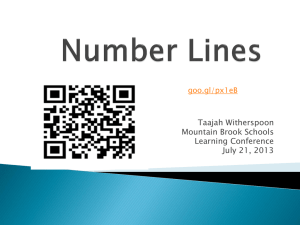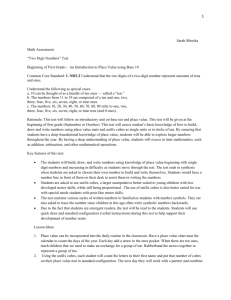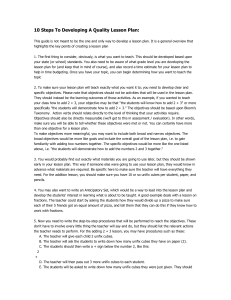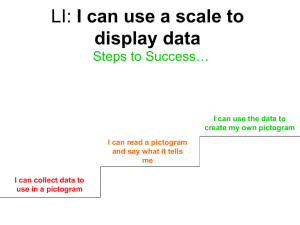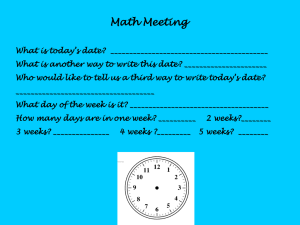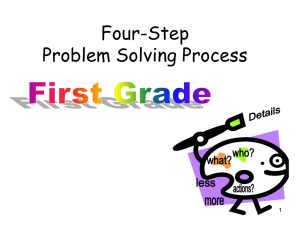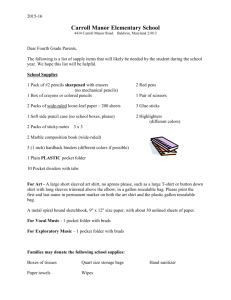K Measure Unit Lesson 1 of Objective 2
advertisement
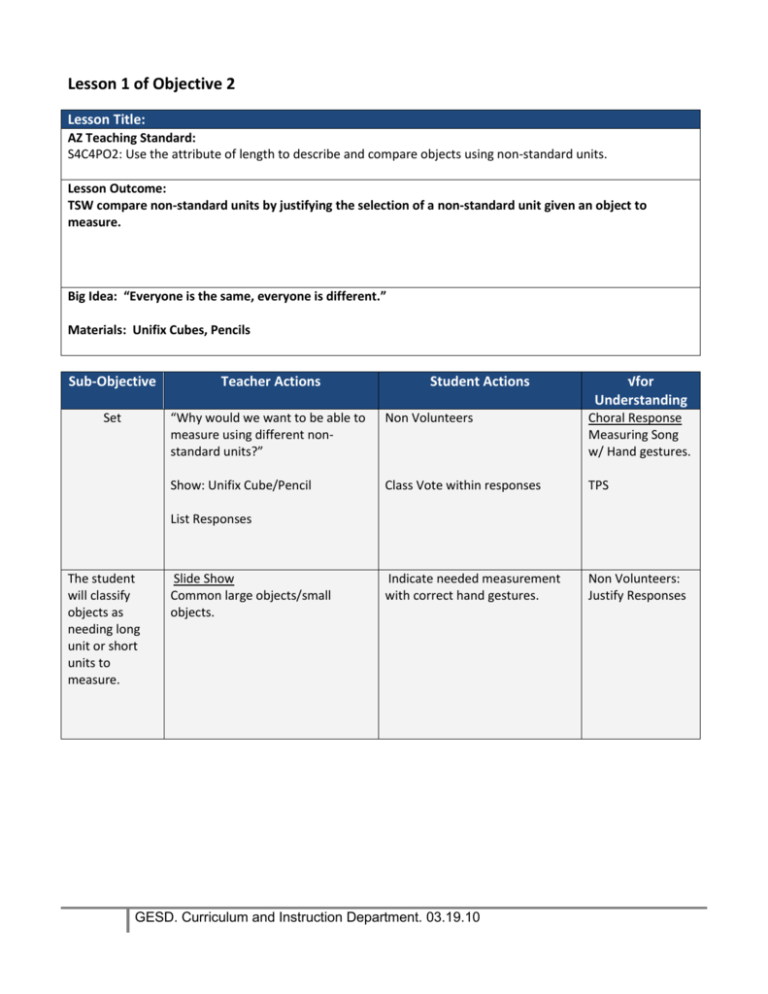
Lesson 1 of Objective 2 Lesson Title: AZ Teaching Standard: S4C4PO2: Use the attribute of length to describe and compare objects using non-standard units. Lesson Outcome: TSW compare non-standard units by justifying the selection of a non-standard unit given an object to measure. Big Idea: “Everyone is the same, everyone is different.” Materials: Unifix Cubes, Pencils Sub-Objective Teacher Actions Student Actions √for Understanding Set “Why would we want to be able to measure using different nonstandard units?” Non Volunteers Choral Response Measuring Song w/ Hand gestures. Show: Unifix Cube/Pencil Class Vote within responses TPS Indicate needed measurement with correct hand gestures. Non Volunteers: Justify Responses List Responses The student will classify objects as needing long unit or short units to measure. Slide Show Common large objects/small objects. GESD. Curriculum and Instruction Department. 03.19.10 Model Demonstration Measuring hand with pencils, create pictograph. Conclusion: Everyone’s hands’ are measuring 1. The student will comprehend the need for different nonstandard units when measuring. Unifix Q: In our class is everyone’s hand the same size? Predict, Compare Hand Sizes Rally: Our hand sizes are different. Model We need to find a way to measure so we can be more accurate. Metaphor: Accuracy is like getting dressed, there are specific clothes I like to wear so I don’t just say “Mom I want a shirt, I say Mom I want my pink shirt with flowers on it and a butterfly.” Demonstration Measure with unifix create pictogram. Compare pictograms, which pictogram is more accurate. Pencil Pictogram: This is like white shirt, white shirt, white shirt, etc Unifix Pictogram: blue butterfly shirt, red tree Shirt, yellow sun shirt, etc. Q: Why is it best we measure our hands with unifix cubes? TPS Q: What is accuracy? Q: What are other body parts we would measure with the unifix cubes? Non-volunteer GESD. Curriculum and Instruction Department. 03.19.10 Summarize “When objects are small like our hands we need to measure with small units so we can be more accurate.” “Accuracy is like . . The student will comprehend the need for different nonstandard units when measuring. Model Demonstrate measuring height with unifix cubes (with a timer on), 1/3 of the way in . . . “Man I wish there was an easier or quicker way to do this?” Non-volunteers Q: Can anyone think of a faster way of doing this? Summarize correct answer. Pencils Emphasize the time it took to measure 1/3 height using unifix cubes. Demonstrate measuring with pencils. Compare times Q: What did you notice about the time it took to measure with unifix cubes and the time it took to measure with pencils? TPS With large objects we should measure with large non-standard units. Choral Response w/ hand gestures. Summarize Demonstrate Measure 3-4 more bodies create pictograph. Q: Was that faster than measuring with unifix cubes? Class Vote Q: Were we still able to be accurate? Non volunteers State correct answer GESD. Curriculum and Instruction Department. 03.19.10 Summarize Activity Formatively assess With partners the students will diagram the measurement of two long body parts, and two small body parts with a pictogram. Closure 1. Select the appropriate non-standard unit of measurement for the appropriate body part. 2. Measure accurately. 3. Create pictogram. “My daughter wanted to measure Students draw foot with either her foot, on the table next to her coins or popsicle sticks next to it. there was a popsicle stick and a coin, what should she do, draw it.” GESD. Curriculum and Instruction Department. 03.19.10 The student will perform the action until correct. Formatively assess
